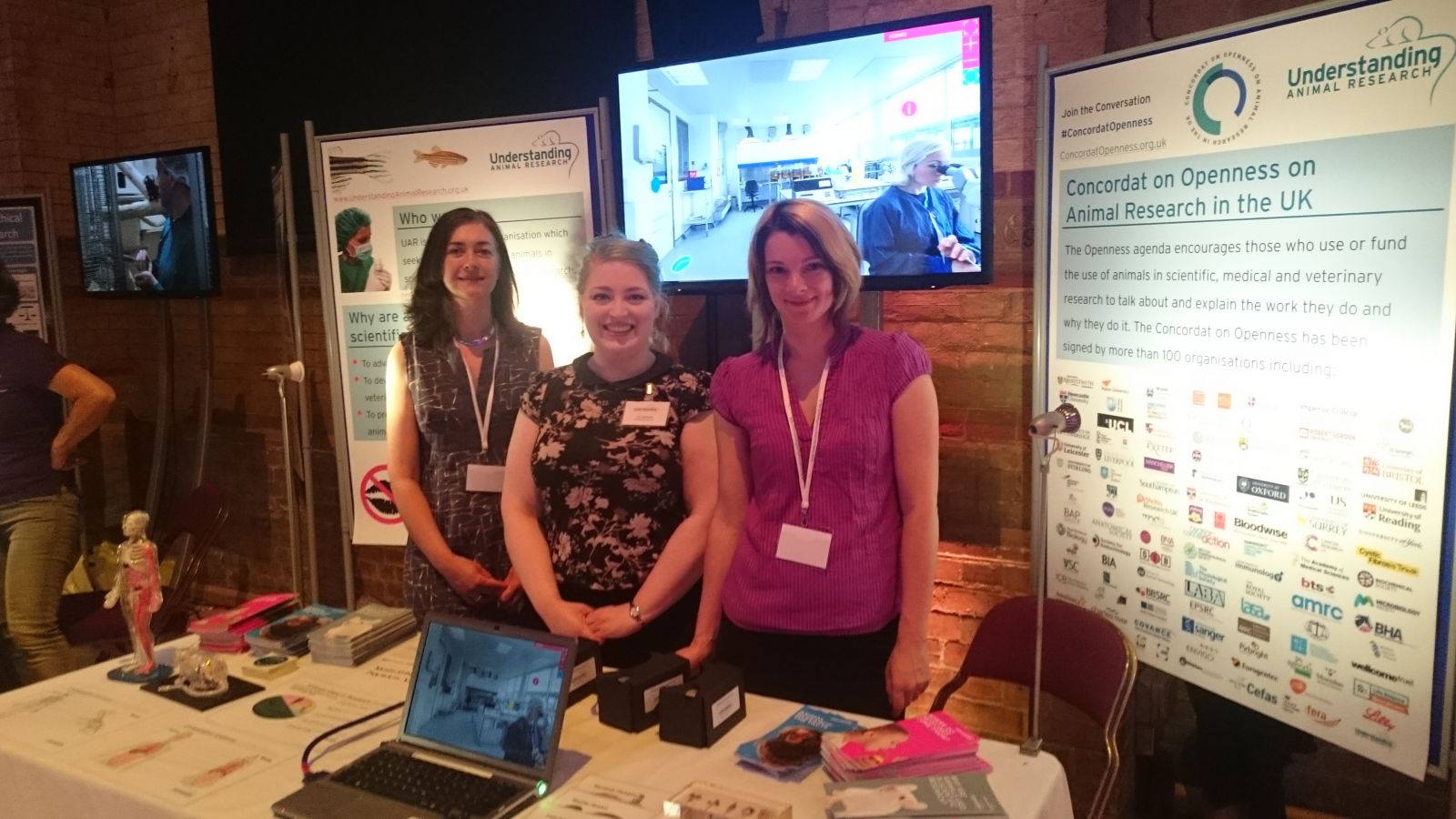
Text to go here...
Cambridge BRAINFest 2017
Understanding Animal Research was fortunate to have a stall at the recent Cambridge Neuroscience festival, or BRAINFest 2017, on 23-25th June. The festival aimed to show the general public the research going at the University of Cambridge by “bring[ing] together neuroscientists from across Cambridge, to present ground breaking research through interactive exhibits”.
Alongside talks and films, theatre, there was a hall full of stalls staffed by groups of neuroscientists. Topics covered included dementia, mental health, brain development, perception, and much more. Some research exhibited was clinical while other studies used animals (vertebrates and invertebrates), computers and other innovative methods.
Understanding Animal Research’s stall included a large screen showing our interactive Lab Animal Tour, as well as a Virtual Reality tour of MRC Harwell. Visitors could get hands on with our model human and rat, identifying the organs inside the body common to both species (all of them!), as well as matching the vitrified brains of a rabbit, frog, fish, bird and snake to their respective picture.
Over the two weekend days UAR’s stall received around 400 visitors – children, students, parents, scientists and interested members of the public. This provided an opportunity to show people what the inside of an animal facility looks like, and to answer the questions people had. Many people were surprised to find that cosmetic testing using animals is banned in the UK, that mice, fish rats and birds account for around 97% of all research, and that zebrafish are an incredibly important to modern research (across the room another stall allowed visitors the chance to see zebrafish larvae under the microscope).
In particular the opportunity to look around the lab using the virtual reality goggles was a big hit. Adults and kids alike could be seen turning around on the spot asking about racks of mouse cages, giant robot cage washers and heart scanning technology. And UAR’s was not the only stall sporting VR technology: Alzheimer’s Research UK was using VR goggles to allow wearers to simulate the experience of a dementia sufferer with its new “A Walk Through Dementia” app.
It was great to see so many research groups on other stalls talking about their own animal use. Stalls included projects looking at how locusts hear, the brain development of zebrafish (lit up using the GFP gene), the link between trauma and therapeutic forgetting in rodents, OCD in rodents, brain repair in rats, stress and mental health in marmosets, and much, much more. The University Animal Welfare and Ethical Review Body (AWERB) was also on hand to explain how animals are looked after in the university, and about the ethical review process necessary for studies to be approved.
We thank the University of Cambridge for the opportunity to talk to the public about the use of animals in research and look forward to similar projects in the future.

Last edited: 10 January 2022 09:23



